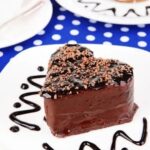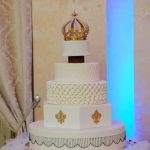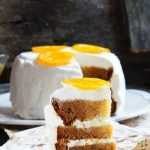Are you looking to learn how to decorate a topsy turvy cake with fondant? Topsy turvy cakes have become increasingly popular for special occasions due to their whimsical and gravity-defying designs. In this article, we will guide you through the process of creating a stunning topsy turvy cake using fondant as your primary decorating medium.
Topsy turvy cakes, also known as mad hatter or whimsical cakes, feature slanted tiers that create an illusion of being off-kilter. This unique design can add a touch of playfulness and creativity to any celebration. Decorating a topsy turvy cake requires precision and attention to detail, especially when using fondant to cover and embellish the cake.
Fondant is a versatile sugar paste that is often used in cake decorating for its smooth finish and ability to be molded into intricate designs. Understanding how to work with fondant is essential for achieving professional-looking results on your topsy turvy cake. By following our step-by-step guide and tips, you’ll be able to master the art of decorating with fondant and create a show-stopping topsy turvy cake that will impress your guests.
Understanding Fondant and Its Role in Cake Decorating
Fondant is a versatile and popular material in cake decorating, known for giving cakes a smooth and polished finish. It is essentially a pliable icing that can be rolled out into thin sheets to cover cakes or molded into various shapes for decorative elements.
Fondant comes in various colors, making it easy to customize your cake design to fit any theme or occasion. When it comes to decorating a Topsy Turvy cake with fondant, understanding the basics of working with fondant is key to creating a visually stunning and structurally sound cake.
One of the first steps in using fondant for cake decorating is ensuring that your work surface and tools are clean and free of any debris or grease. This will help prevent sticking and ensure a smooth application of the fondant onto your Topsy Turvy cake layers.
Dusting your work surface lightly with powdered sugar or cornstarch can also help prevent the fondant from sticking as you roll it out. Additionally, investing in quality fondant that is pliable and easy to work with will make the entire decorating process much smoother.
When covering a Topsy Turvy cake with fondant, it’s important to take into account the unique shape of the tiers. Begin by rolling out a large piece of fondant into a circle slightly larger than the top tier of your cake. Carefully drape the fondant over the tier and smooth it out gently, working from the top down to avoid air bubbles.
Repeat this process for each subsequent tier, making sure to secure the edges where they meet at angles by gently pressing them together. With patience and practice, you can achieve a professional-looking finish on your Topsy Turvy cake using fondant.
| Key Points | Details |
|---|---|
| Clean Work Surface | Ensure work surface is clean and free of debris or grease to prevent sticking. |
| Quality Fondant | Use pliable and high-quality fondant for easier application on Topsy Turvy cakes. |
| Smooth Application | Gently drape and smooth out fondant on each tier, working from top down to avoid air bubbles. |
Choosing the Right Topsy Turvy Cake Design
When it comes to choosing the right design for a topsy turvy cake, the possibilities are endless. The unique structure of a topsy turvy cake allows for creative and whimsical designs that can truly impress any guest at a special occasion. Whether you are looking to create a fun and colorful birthday cake or an elegant and sophisticated wedding cake, selecting the perfect design is crucial in achieving the desired look.
Theme and Occasion
One important factor to consider when choosing a topsy turvy cake design is the theme and occasion for which the cake is being created. For example, if you are making a topsy turvy cake for a child’s birthday party, you may want to incorporate bright colors, playful shapes, and fun elements like cartoon characters or animals.
On the other hand, if you are designing a topsy turvy cake for a wedding or formal event, you may opt for more subtle colors, elegant patterns, and sophisticated details.
Personalization
Another key aspect of choosing the right topsy turvy cake design is personalization. Consider incorporating elements that reflect the individual’s personality or interests. This could include hobbies, favorite colors, special symbols or meaningful motifs. By adding personalized touches to the design, you can create a truly unique and memorable topsy turvy cake that will be cherished by all.
Consulting With Professionals
If you are unsure about what design to choose for your topsy turvy cake, it can be helpful to consult with professional bakers or cake decorators. They can provide valuable insights and suggestions based on their experience and expertise in creating show-stopping cakes.
Additionally, they may be able to offer guidance on how to execute intricate designs or incorporate specific elements into your topsy turvy cake decoration. Ultimately, choosing the right design for your topsy turvy cake is an important step in creating a stunning centerpiece for any celebration.
Preparing the Topsy Turvy Cake Layers for Fondant
When it comes to decorating a topsy turvy cake with fondant, one of the crucial steps is preparing the cake layers to ensure a smooth and flawless finish. This process involves creating a stable base for your fondant covering while also adding to the overall design of the cake. In this section, we will discuss the essential steps you need to take to prepare your topsy turvy cake layers for fondant application.
Leveling and Stacking the Cake Layers
Before you can cover your topsy turvy cake with fondant, it is important to level and stack the individual layers properly. Use a serrated knife or a cake leveler to even out each layer and create flat surfaces for stacking.
Make sure to secure each layer with a thin layer of buttercream or ganache between them to prevent sliding during assembly. Additionally, consider using dowels or straws inserted into the cake for added support, especially if your topsy turvy design features multiple tiers.
Crumb Coating the Cake
After stacking the cake layers, apply a thin layer of buttercream all over the cake as a crumb coat. This will help seal in any crumbs and provide a smooth surface for the fondant covering. Use an offset spatula or bench scraper to evenly spread the buttercream on the cake, making sure to fill in any gaps between layers. Chill the crumb-coated cake in the refrigerator for about 15-20 minutes before proceeding with fondant application.
Creating Sharp Edges and Corners
To achieve clean lines and sharp edges on your topsy turvy cake covered with fondant, make sure that your stacked layers are well-leveled and aligned. Use a ruler or straight edge tool to mark where you want each tilt or angle on your topsy turvy design for precision.
Trim any excess cake from edges if necessary before applying another thin layer of buttercream as a final coating before fondant application. This will help create defined edges once covered with fondant and enhance the overall look of your topsy turvy creation.
Covering the Cake With Fondant Step-by-Step
When decorating a topsy turvy cake with fondant, one of the crucial steps is covering the cake smoothly and flawlessly. To achieve this, you will need to start with properly preparing your cake layers. Make sure your cake layers are leveled, chilled, and stacked securely before moving on to applying fondant.
To begin covering your topsy turvy cake with fondant, you will need a rolling pin, powdered sugar or cornstarch for dusting, and a smooth work surface. Start by kneading your fondant until it is soft and pliable. Roll out the fondant to a thickness of about 1/8 inch, ensuring it is large enough to cover the entire cake.
Carefully lift the rolled-out fondant over the cake and gently drape it over the top. Smooth out any air bubbles or wrinkles using a fondant smoother or your hands. Trim off any excess fondant at the bottom of the cake using a sharp knife. Finally, use your fingers or tools to blend and shape the fondant around the unique contours of your topsy turvy design, creating a clean and polished finish.
| Decoration Tip | Description |
|---|---|
| Smooth Application | Ensure that your fondant is rolled out evenly to prevent tears or gaps when covering your topsy turvy cake. |
| Work Quickly | Fondant can dry out fast, so move efficiently but carefully when covering your cake to prevent cracking. |
| Practice Makes Perfect | If you are new to working with fondant, practice on small cakes or dummy cakes before tackling a topsy turvy design. |
Adding Decorative Elements to Your Topsy Turvy Cake
When it comes to decorating a topsy-turvy cake with fondant, adding decorative elements is where you can truly let your creativity shine. Whether you’re going for a whimsical and colorful design or a more elegant and sophisticated look, the options are endless. From edible flowers and intricate piping work to fondant sculptures and personalized toppers, there are numerous ways to make your topsy-turvy cake stand out.
One popular choice for adding decorative elements to a topsy-turvy cake is using fondant accents. Fondant allows you to create intricate details such as bows, ribbons, cut-outs, and more. You can use various tools like molds, cutters, and sculpting tools to shape the fondant into different designs. Consider layering different colors of fondant or adding edible glitter or luster dust to give your decorations an extra touch of flair.
Another way to elevate the look of your topsy-turvy cake is by incorporating piped decorations. Using royal icing or buttercream, you can pipe borders, swirls, flowers, lettering, and other designs onto your cake tiers. Piping offers versatility in creating both simple and complex patterns, making it a versatile technique for customizing the appearance of your cake. Experiment with different piping tips and techniques to achieve the desired effect on your topsy-turvy creation.
Troubleshooting Common Issues When Decorating With Fondant
When it comes to decorating a topsy turvy cake with fondant, there are common issues that may arise during the process. Understanding how to troubleshoot these issues can help ensure that your cake turns out beautifully. Here are some tips and tricks to help you overcome any challenges you may encounter:
1. Cracking Fondant: If you notice cracks in your fondant as you cover the cake, it could be due to the fondant drying out too quickly or being rolled out too thin. To prevent this issue, make sure to knead the fondant well before rolling it out and work quickly when covering the cake. You can also try adding a little bit of shortening to the fondant to make it more pliable.
2. Air Bubbles: Air bubbles can form between the fondant and the cake, causing unsightly bumps on the surface. To remove air bubbles, gently smooth the fondant over the cake using a fondant smoother or your hands. If air bubbles still persist, use a pin to carefully pierce the fondant and release the trapped air.
3. Fondant Tear or Rip: Accidentally tearing or ripping the fondant while covering the cake is a common issue faced by many decorators. To fix this problem, gently press the torn edges back together using your fingers. Use a small amount of water or edible glue to help seal the seam and smooth out any imperfections.
By following these troubleshooting tips and techniques, you can address common issues that may arise when decorating a topsy turvy cake with fondant. Remember that practice makes perfect, so don’t be discouraged if you encounter challenges along the way. With patience and perseverance, you’ll be able to create a stunning topsy turvy cake that will impress your friends and family at any special occasion.
Tips and Tricks for a Successful Topsy Turvy Cake Decoration
Decorating a topsy turvy cake with fondant can seem like a daunting task, but with the right tips and tricks, you can create a show-stopping masterpiece. Here are some helpful guidelines to ensure your cake decorating process is smooth and successful:
- Start with a stable base: Topsy turvy cakes are known for their tilted layers, so it’s essential to have a solid foundation. Make sure each layer is securely stacked and supported with dowels to prevent any collapsing.
- Chill your cake: Before covering your topsy turvy cake with fondant, chill it in the refrigerator for at least 30 minutes. This will help firm up the layers and make them easier to handle when applying the fondant.
- Roll out fondant evenly: When rolling out your fondant, make sure it’s even in thickness to ensure a smooth finish on your cake. Use powdered sugar or cornstarch to prevent sticking as you roll it out.
Once you’ve covered your topsy turvy cake with fondant, you can start adding decorative elements to enhance its visual appeal. Here are some additional tips for taking your cake decoration to the next level:
- Use edible paints or food coloring to create intricate designs on the fondant surface.
- Experiment with different textures by using embossing mats or stencils on the fondant before applying it to the cake.
- Add edible embellishments like edible pearls, flowers, or piping details to give your topsy turvy cake a unique and elegant touch.
By following these tips and incorporating creative techniques into your topsy turvy cake decoration process, you’ll be able to showcase a stunning and visually captivating dessert that will impress all of your guests. With practice and patience, decorating with fondant will become second nature, allowing you to unleash your creativity and bring your artistic vision to life on each remarkable creation.
Conclusion
In conclusion, decorating a topsy turvy cake with fondant can be a fun and creative process that allows you to showcase your baking skills and artistic flair. By following the steps outlined in this guide, you can create a stunning and visually impressive cake that will be sure to wow your guests at any special occasion.
From choosing the right design to troubleshooting common issues, mastering the art of decorating a topsy turvy cake with fondant requires practice, patience, and attention to detail.
One key takeaway from this guide is the importance of proper preparation when working with fondant. Ensuring that your cake layers are level and stable before covering them with fondant is essential for achieving a smooth and professional finish. Additionally, taking the time to carefully plan out your design and select complementary colors and decorative elements will help elevate your topsy turvy cake to new heights.
As you continue to hone your skills in decorating topsy turvy cakes with fondant, don’t be afraid to experiment and think outside the box. Incorporating unique textures, patterns, or embellishments can make your creation truly one-of-a-kind. Remember, whether you’re celebrating a birthday, wedding, or any other special event, your beautifully decorated topsy turvy cake is sure to be a showstopper that leaves a lasting impression on all who see it.
Frequently Asked Questions
How Do You Carve a Topsy-Turvy Cake?
Carving a topsy-turvy cake requires precision and patience. Start by baking the different layers of the cake at different heights and angles. Then, use a serrated knife to carefully carve away sections of the cake to create the topsy-turvy effect, ensuring each layer is stable and balanced.
How Do You Stick Fondant to a Cake?
To stick fondant to a cake, you can use a thin layer of buttercream or jam as a base. First, apply a crumb coat of buttercream to the cake to create a smooth surface for the fondant.
Roll out the fondant to the desired thickness, gently lift it using a rolling pin, and then carefully lay it over the cake. Smooth the fondant with your hands or fondant smoothers to adhere it to the buttercream underneath.
How Do You Stack a Topsy-Turvy Cake?
Stacking a topsy-turvy cake requires careful planning and construction. Ensure that each tier is well supported with dowels or bubble tea straws inserted into each layer vertically.
Start by placing the largest tier on the bottom and work your way up to the smallest tier, making sure that each layer is level and stable before adding another tier on top. Use royal icing or melted chocolate as glue between tiers for added stability during stacking.

Welcome to my blog about home and family. This blog is a place where I will share my thoughts, ideas, and experiences related to these important topics. I am a stay-at-home mom with two young children. I hope you enjoy reading it! and may find some helpful tips and ideas that will make your home and family life even better!





